Appendix
Etymologies
Incino
According to Angelo Prati, author of the book Research of the Toponymy of Trentino, Incino may draw its name from uncino, or “hook,” the last remnant of a chain from the toll barrier over the Cismon Bridge. It is believed that at the foot of Incino, there was a ring attached to a rock and a chain attached to the ring, which kept people and goods from evading the toll (levied sometimes by Venice and sometimes Bassano). The last tolls on the Cismon Bridge were abolished on July 30, 1622.
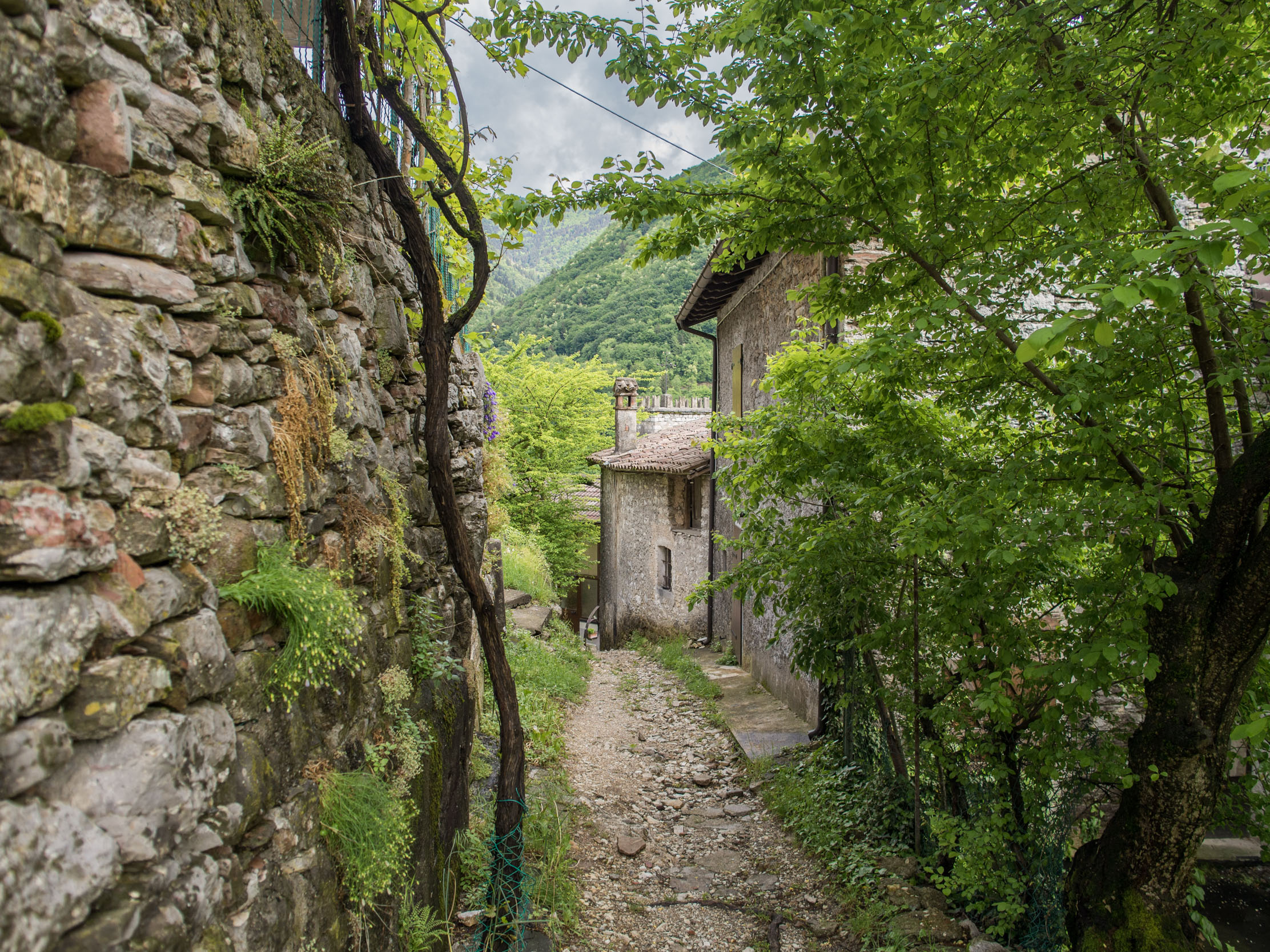
The first historical documentation of the name goes back to 1488, with Cismon’s first pastoral visit from a bishop of Padua, Pietro Barozzi. The report, preserved in the diocesan archive in Padua, refers to it thus:
Proceeding against the current of the river, nearly at its bank, you encounter a chapel built in the name of the blessed Virgin in the place called “Pedancin.”
Corlo
derives from the Latin corulus, which was contracted over time to Corlus, and then Corlo. Corulus in Latin means “hazelnut plant,” which in ancient times must have distinguished the place by its thick growth (though it also appeared in many other parts of the township).
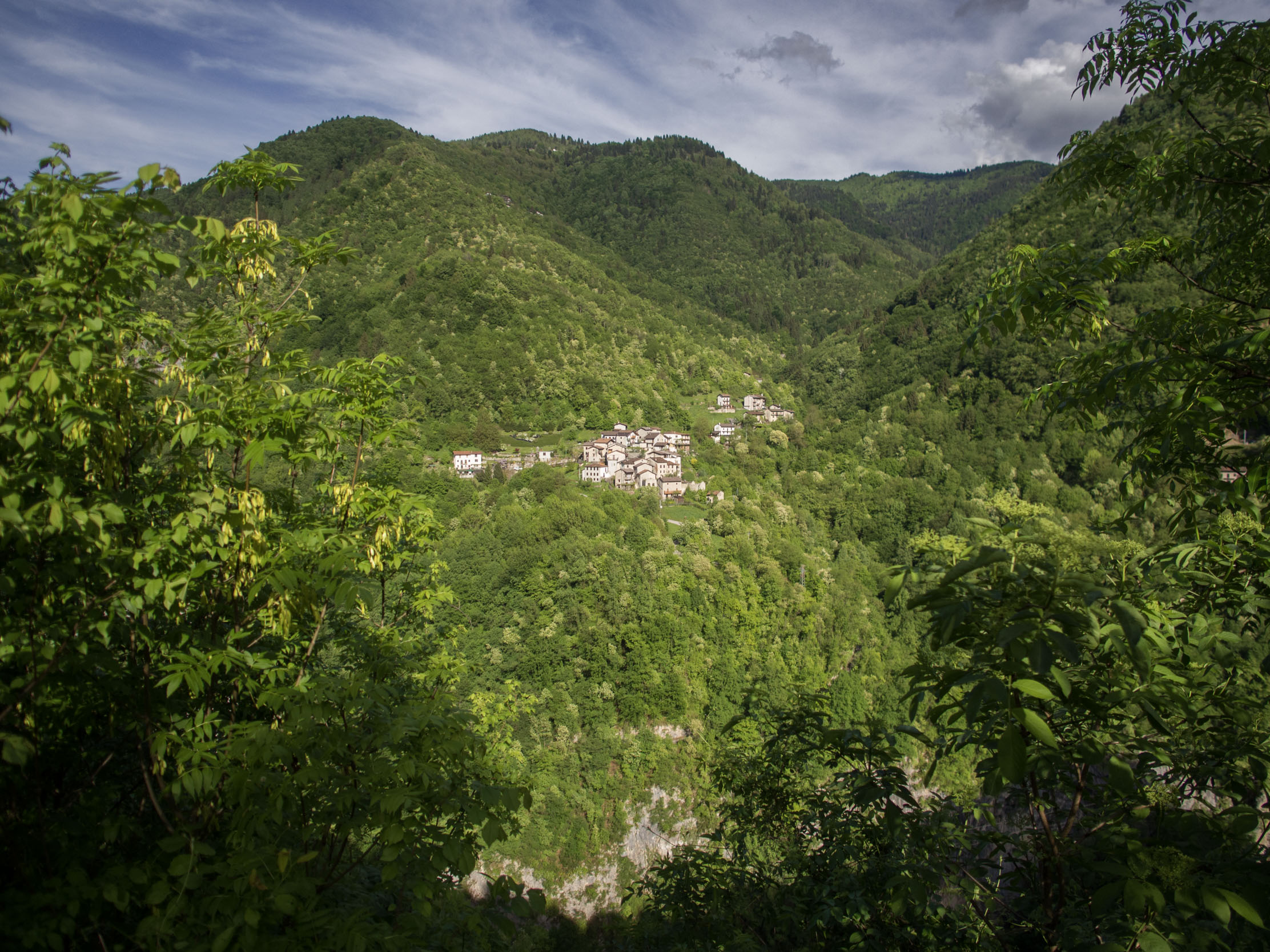
Tanisoi
is derived from the ancient Latin tanis, which means place or land between two valleys (Valle della Fontana and Valle dei Pedoi).
Pala della Renga
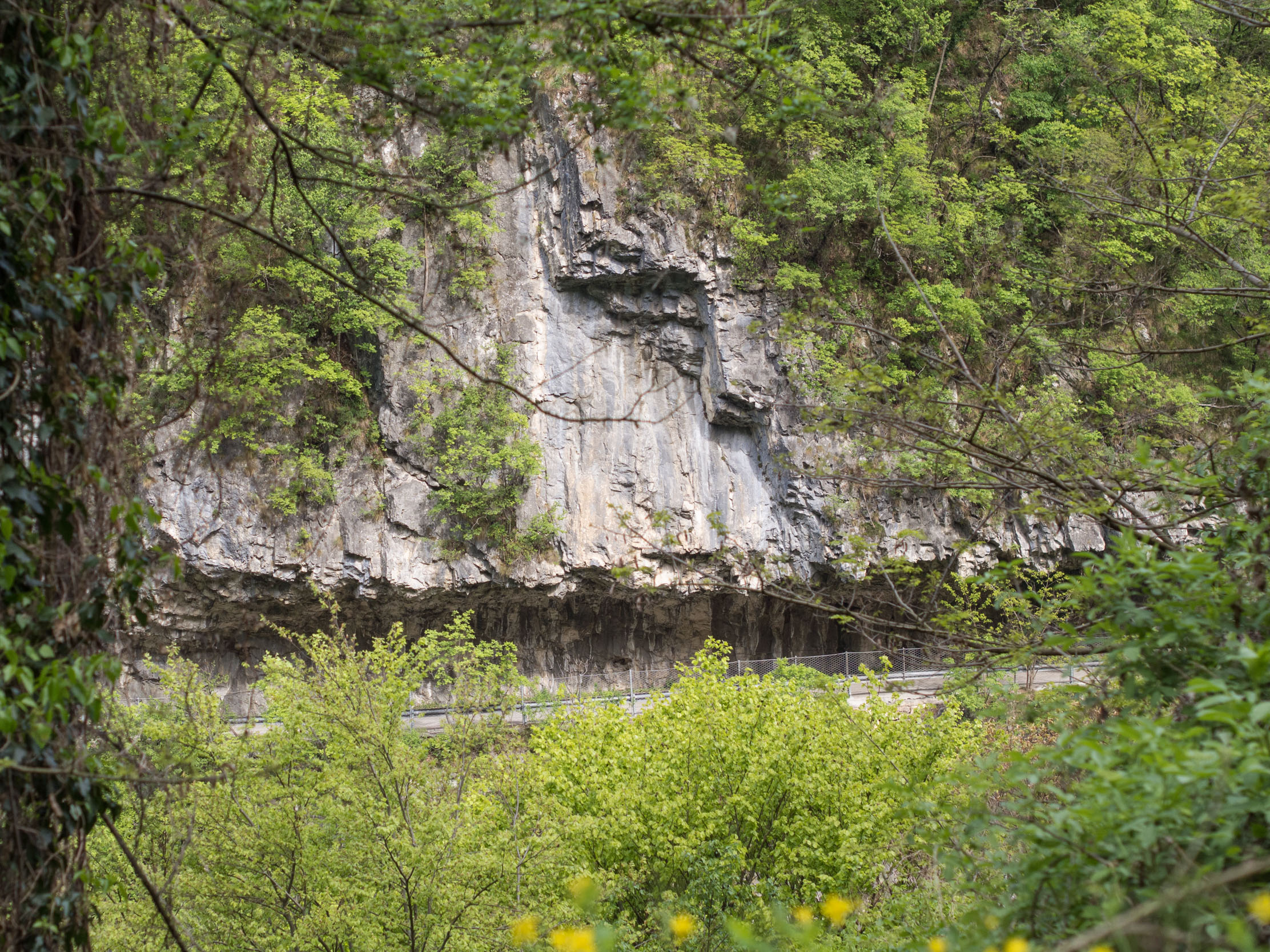
Pala means “steep slope,” while Renga is derived from the Latin arenga, which denotes the site of a public or religious assembly. Given the proximity of the little church of Pedancino, there before the year 1000, the assembly could not have been anything other than religious.
Pomer
The name must point to the existence of a plantation of pomer (apple trees), as in dialect. The only certain thing is that after 1800 its name was Pomari.
Zancanaro
Derivatives: Zanchetta, Zanchini, Zanconato, Zancaner, Cancan, Zancanella…
Moderately prevalent throughout the Triveneto, its root comes from ancient nicknames. Zanka, Zanketa, and Zankinus are documented in the 1200s in Emilia, Tuscany, and Sardegna. Formed out of different, often cross-pollinated regional voices, the most important ones are: Zanca, understood as gamba, or leg; Cianca (especially in Tuscany and Sardegna); in Venetan dialect Zanca is interpreted as “turning, bending” (and figuratively like “crooked legs” or “crooked person”); and in Emilian dialect, zanch means stilts, or long legs.
The original Zancanaro can be clearly traced to Bergamo, where the name is tied to a village in Val Brembana between Zagno and Poscanto named Grumello Dei Zanchi. There are numerous family lines recorded: the Zancanaros of Locatelli had a building on Via Tassis (now Via Colleoni) and a grandiose villa in Gromo (now la Torre) near Mapello.
The “estranged” Zancanaros had a building in Borgo Pignolo, on what is now via Maffeis. In 1500 the gate of Saint Augustine was named “the Zancanaro Rampart.” Donato Calvi, in his book The Capitol of the Warriors, mentions the brothers Paolo and Alessandro Zancanaro. The latter fought in the sieges of Vercelli and Rochette in France and died in 1661 as governor of Padua. In Literary Scene, Calvi again mentions two Zancanaros: Basilio and Giovan Crisostomo, who were given the title of Canon at the Basilica of Saint John Lateran in Rome.
Other traces are found in Cuneo. In 1735 Zancanaros lived in the district called Il Passatore. That family line was extinguished with Luisa Zancanaro, the last survivor, who obtained the title of Countess of Saint George, having married a high magistrate of the realm of Savoy.
In Bassano, Zancanaros arrived from Pove where they mined marble. Ambrogio and Bartolomeo Zancanaro are mentioned. At the beginning of the 1900s, with a royal decree on August 9, 1926, Agostino Zancanaro attained the title of Baron and was inscribed in the golden register of the nobility.
In Incino the most prolific Zancanaro family was that of Sebastian (born February 21, 1739). He had 11 children with Domenica Zancanaro, and their youngest, Giobatta, had 10 (he was Brigida’s great grandfather). More recently, Antonio Zancanaro, (“Toni Meneghet,” d. 1931) and Angela, (“Orna,” d. 1946), had a family with 11 children. The first Zancanaro recorded in Rocca’s death register is Margherita Zancanaro, daughter of Francesco, who died August 28, 1682, followed by Antonio Zancanaro, son of Domenico, who died March 27, 1683. From 1683 to 1879 (196 years) there were 666 deceased buried in Rocca’s cemetery with the name Zancanaro.
These are the various surnames that trace back to Zancanaro: Cane, Cagne, Cana, Camel, Casata, Cici, Cul, Marinei, Meneghet. Before the beginning of the 1800s there were already these three surnames recorded in the death register: Camel, Patacco, and Meneghet. The first written record of the latter is Giacomo Zancanaro, born July 22, 1788, but he was called Meneghet after his great grandfather.
Nardino
Variants: Nardo, Nardin, Nardon…
Barnardo, Bernardino, Nardino. The name Bernardo spreads throughout Italy after the 1200s through the prestige and cult of Saint Bernard of Clairvaux. Bernardo is the adaptation of the Frankish name Berinhard, which is formed from the Old German beran (bear) and harolhd (tough, valiant). Its original meaning would have been “valiant bear,” or “valiant like a bear.” The variant Nardo appears frequently in Lombardy, while Nardin and Nardino appear frequently in the Veneto. From 1683 to 1879 there were 237 Nardinos buried in the cemetery in Rocca. The first man to die was Vettor Nardino, on April 14, 1683; the first woman was Maddalena Nardino, who passed away on April 20, 1685.
Grando
Appearing frequently throughout Italy, only as Grandi in Emilia-Romagna, but in the Veneto also as De Grandi, Grandin (in Venice), and Granzotto (in Feltre). It is a surname produced from the nickname Grande, in reference to large physique and stature.
In Incino the Grandos came from Berti. In the Cismon parish register it appears that the Grandos living in Cismon and Primolano had been from Incino originally.
Borsa
For many centuries the name has denoted transactions, investment trading. It originates from the Belgian Van De Burse family, who in Bruges (Belgium) had first used their mansion as a center of exchange. There is, of course, the rumor of its connotation originating with the French Borse and meaning “he who carries the bag” (of money; today we would say “treasurer”), but that began to spread only in the 1700s.
The first Borsa reported in Incino is a woman, Agnese Borsa, who marries Giovanni Zancanaro (born March 13, 1757), by whom she has 9 children. The name of Agnese’s father is known: Michiel. In a document from 1822, three Borsa families lived in Incino: Antonio’s, Giacomo’s, and Innocente’s.
Conco/Bani
These two names arrived in Incino after 1766, when Bano’s band was marauding across the region of Arsiè. The names would seem to refer to the origins of the bandits: “Conco” is a town on the Asiago Plateau, while “Bano” would indicate the ringleader himself or a close friend. These names would point to where the bandits resided upon their arrival. They remain in use today, long after their qualities have been absorbed among the residents.
Meneghet
is derived from Domenico. The name is a diminutive meaning “little Domenico,” as in a small man, or of low stature. The first Domenico Zancanaro recorded is from 1700.
Martinato/Martinati
These two names are derived from the name Martini, which came up to Incino from Cismon where it has been found in the parish registers since the 1400s. It’s likely that the little district by this name would have been built by Cismonesi who named it after themselves.
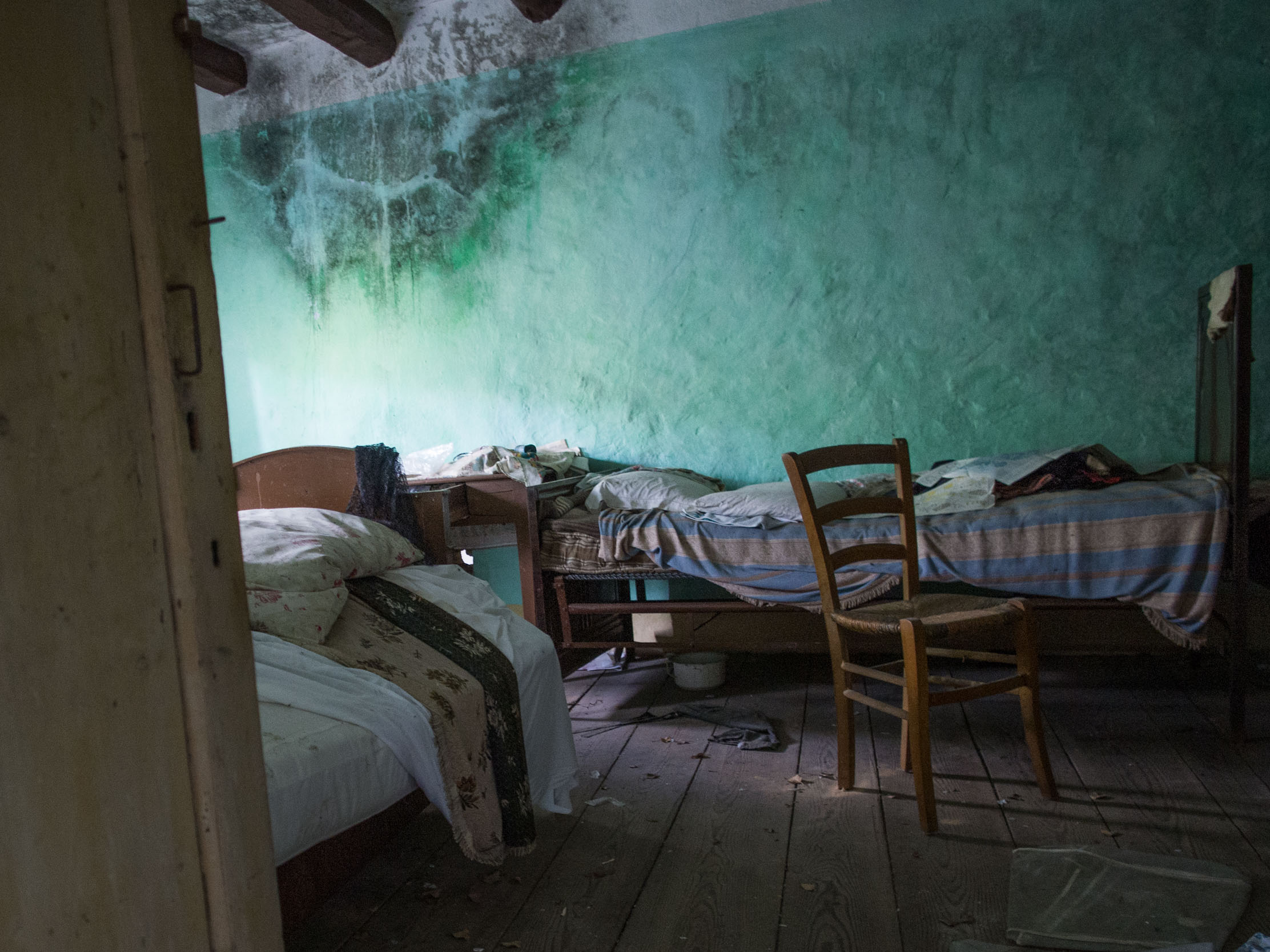
Accounts of Other Nearby Places
Arsiè
arose in 200 A.D. under the name Laricetum (“Land of Larches”), then became Arsetum, then Arsedo, and finally Arsiè.
Fastro
is derived from Fagherastum (“Place of Poor-Quality Beeches”). It became Fastra in the Middle Ages, then transformed into Fastro around 200 years ago.
Primolano
was Pratum Molanum (“Marshy Meadow”).
Fonzaso
was Fons Assium, meaning “Source of Planks,” with an apparent reference to the lumber mills that processed the wood that was sent floating down the Cismon from Primiero.
Feltre
was founded by the Etruscans under the name of Felthuri, or “City of Fel.”
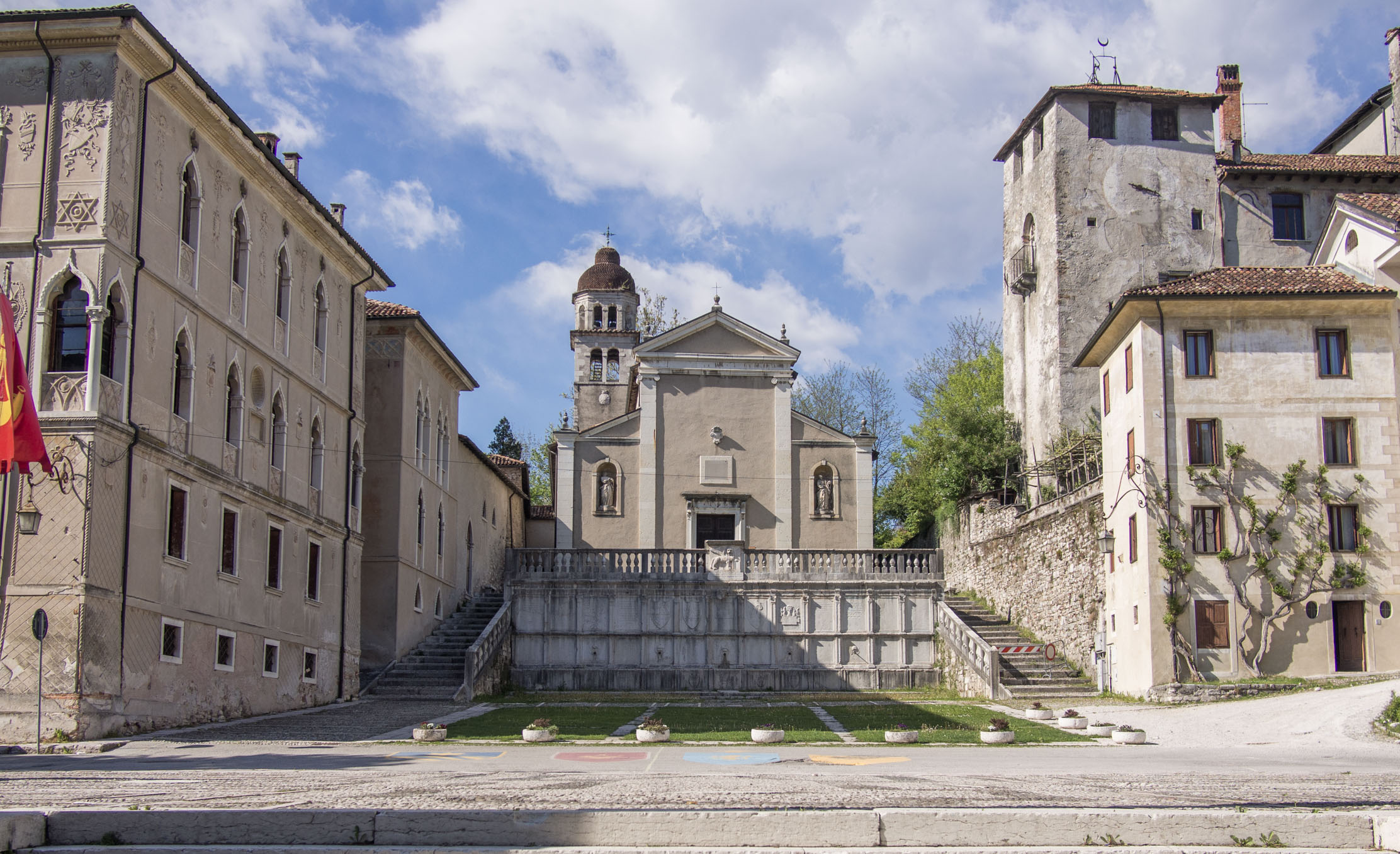
San Vito
was named San Vito after the eponymous saint, while Roveri is derived from Roborum (“Land of Durmast Oak”)
Rivai
was formerly divided in two sections: Tovio and Sorass, which then became Rivalli and finally Rivai.
Belluno
is derived from the Celtic Belo-Dunum, meaning “Gleaming City.”